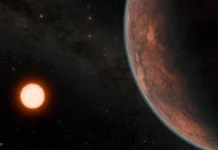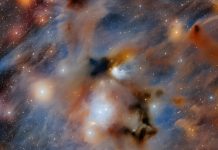
Astronomers have discovered an intriguing Earth-like exoplanet, named Gliese 12 b, located 40 light-years away.
This planet, which may be slightly warmer than Earth, could potentially support life. The findings were published in the Monthly Notices of the Royal Astronomical Society.
Gliese 12 b orbits its star every 12.8 days and is similar in size to Venus, slightly smaller than Earth.
It has an estimated surface temperature of 42°C (107°F), assuming it has no atmosphere. The next crucial step is to determine if it has an atmosphere and what type it might be.
An Earth-like atmosphere could support liquid water and possibly life, while a Venus-like atmosphere could make it inhospitable.
This exoplanet is significant because it helps us understand how Earth and Venus evolved so differently.
Only a few exoplanets like Gliese 12 b have been found that deserve further investigation, making it a prime target for the James Webb Space Telescope.
Most exoplanets are discovered using the transit method, where a planet passes in front of its star, causing a dip in brightness.
During a transit, light from the star passes through the planet’s atmosphere, revealing chemical fingerprints that telescopes can detect.
Gliese 12 b is notable because it orbits a cool red dwarf star, Gliese 12, which is 27% the size of our sun and has a surface temperature around 60% of the sun’s. The planet orbits very close to its star, receiving 1.6 times more energy than Earth gets from the sun, and about 85% of what Venus receives.
Understanding Gliese 12 b’s atmosphere is vital. It could range from no atmosphere to one similar to Venus’s thick, toxic atmosphere. This planet could help us learn whether Earth-sized planets around cool stars can retain their atmospheres.
“Our study of Gliese 12 b will help us understand what kind of atmospheres Earth-sized planets around cool stars can have,” said Shishir Dholakia, a doctoral student at the University of Southern Queensland.
“Since it receives more light than Earth but less than Venus, it’s a key planet for bridging the gap between these two.”
Researchers used data from NASA’s TESS (Transiting Exoplanet Survey Satellite) to make their discovery. Gliese 12 b, termed an “exo-Venus” due to its similarities with Venus, shows no signs of the extreme stellar activity typical of red dwarfs, suggesting its atmosphere might still be intact.
“We know of only a few temperate planets close enough for this kind of detailed study,” said Michael McElwain, a research astrophysicist at NASA’s Goddard Space Flight Center. “To understand the diversity of atmospheres and evolutionary outcomes, we need more examples like Gliese 12 b.”
This discovery, at 40 light-years away, is similar in distance to the TRAPPIST-1 system, which has seven Earth-sized planets. However, Gliese 12 b stands out as a promising candidate for further exploration to uncover the secrets of potentially habitable worlds beyond our solar system.
Source: Royal Astronomical Society.



